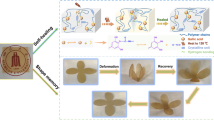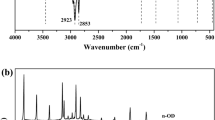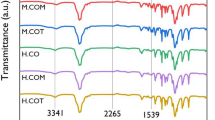Abstract
Many efforts have been made to develop catalysts for polyurethanes (PUs) due to their significant roles in the manufacturing process. However, it is still a long-standing technical issue to manipulate the catalytic activity and enhance the storage stability of PU precursors by using suitable catalyst. In this work, a new microcapsule thermolatent catalyst was prepared by emulsion solvent evaporation (ESE) method with a dibutyltin dilaurate (DBTDL) core and a polymeric shell. The glass transition temperature (Tg) of polymeric shell was utilized as threshold temperature. By changing the composition of acrylate copolymers, the glass transition temperature of polymeric shell could be controlled, which further moderated the latency and catalytic activity of ESE microcapsule catalysts. Compared to DBTDL, all ESE microcapsule catalysts showed certain latency at 30 °C. The catalytic activity of ESE microcapsules was rapidly increased at 70 °C. In the ESE microcapsule catalysts, ESE1 sample exhibited excellent performance due to the suitable Tg and uniform morphology. Compared to phenyl mercury neodecanoate and DBU, which are traditional thermolatent catalysts, ESE1 sample showed more excellent latency and catalytic activity.











Similar content being viewed by others
References
Burelo M, Martínez A, Cruz-Morales JA, Tlenkopatchev MA, Gutiérrez S (2019) Metathesis reaction from bio-based resources: synthesis of diols and macrodiols using fatty alcohols β-citronellol and natural rubber. Polym Degrad Stab. https://doi.org/10.1016/j.polymdegradstab.2019.05.021.
Pawar MS, Kadam AS, Dawane BS, Yemul OS (2016) Synthesis and characterization of rigid polyurethane foams from algae oil using biobased chain extenders. Polym Bull 73:727–741. https://doi.org/10.1007/s00289-015-1514-1
Chung YC, Bae JC, Choi JW, Chun BC (2019) The preparation of hydrogel-like polyurethane using the graft polymerization of N, N-dimethylaminoethyl methacrylate and acrylic acid. Polym Bull 76:6371–6386. https://doi.org/10.1007/s00289-019-02726-x
Ranote S, Kumar D, Kumari S, Kumar R, Chauhan GS, Joshi V (2019) Green synthesis of Moringa oleifera gum-based bifunctional polyurethane foam braced with ash for rapid and efficient dye removal. Chem Eng J 361:1586–1596. https://doi.org/10.1016/j.cej.2018.10.194
Sarojini KS, Indumathi MP, Rajarajeswari GR (2019) Mahua oil-based polyurethane/chitosan/nano ZnO composite films for biodegradable food packaging applications. Int J Biol Macromol 124:163–174. https://doi.org/10.1016/j.ijbiomac.2018.11.195
Xi XD, Wu ZG, Pizzi A, Gerardin C, Lei H, Zhang BG, Du GB (2019) Non-isocyanate polyurethane adhesive from sucrose used for particleboard. Wood Sci Technol 53(2):393–405. https://doi.org/10.1007/s00226-019-01083-2
Patil CK, Rajput SD, Marathe RJ, Kulkarni RD, Phadnis H et al (2017) Synthesis of bio-based polyurethane coatings from vegetable oil and dicarboxylic acids. Prog Org Coat 106:87–95. https://doi.org/10.1016/j.porgcoat.2016.11.024
Liu JL, Yang YC, Gao B, Li YCC, Xie JZ (2019) Bio-based elastic polyurethane for controlled-release urea fertilizer: fabrication, properties, swelling and nitrogen release characteristics. J Clean Prod 209:528–537. https://doi.org/10.1016/j.jclepro.2018.10.263
Mahmood N, Yuan ZS, Schmidt J, Xu CB (2016) Depolymerization of lignins and their applications for the preparation of polyols and rigid polyurethane foams: a review. Renew Sust Energ Rev 60:317–329. https://doi.org/10.1016/j.rser.2016.01.037
Sonjui T, Jiratumnukul N (2015) Physical properties of bio-based polyurethane foams from bio-based succinate polyols. Cell Polym 34(6):353–366. https://doi.org/10.1177/026248931503400604
Sonnabend M, Aubin SG, Schmidt AM, Leimenstoll MC (2021) Sophorolipid-based oligomers as polyol components for polyurethane systems. Polym-Basel 13:2001. https://doi.org/10.3390/polym13122001
Dias G, Prado M, Le Roux C, Poirier M, Micoud P, Ligabue R, Martin F, Einloft S (2020) Synthetic talc as catalyst and filler for waterborne polyurethane-based nanocomposite synthesis. Polym Bull 77(2):975–987. https://doi.org/10.1007/s00289-019-02789-w
Kim KM, Park HW, Shim GS et al (2020) Mechanical properties and decomposition performance of peelable coating containing UiO-66 catalyst and waterborne silane-terminated polyurethane dispersions. J Mater Sci 55(6):2604–2617. https://doi.org/10.1007/s10853-019-04184-2
Muuronen M, Deglmann P, Tomovi Z (2019) Design principles for rational polyurethane catalyst development. J Org Chem 84(12):8202–8209. https://doi.org/10.1021/acs.joc.9b01319
Bai L, Zheng JP (2020) A transparent, high refractive, shape-memory, healable, and recyclable phenolic polyurethane thermoset: unexpected roles of bromine substituents and tertiary amine catalysts. Macromol Chem Phys 221(5):1900493. https://doi.org/10.1002/macp.201900493
Sridaeng D, Limsirinawa A, Sirojpornphasut P, Chawiwannakorn S, Chantarasiri N (2015) Metal acetylacetonate-amine and metal nitrate-amine complexes as low-emission catalysts for rigid polyurethane foam preparation. J Appl Polym Sci 132(31):42332. https://doi.org/10.1002/app.42332
Wegener G, Brandt M, Duda L et al (2001) Trends in industrial catalysis in the polyurethane industry. Appl Catal A-Gen 221(1–2):303–335. https://doi.org/10.1016/s0926-860x(01)00910-3
Sardon H, Pascual A, Mecerreyes D, Taton D, Cramail H, Hedrick JL (2015) Synthesis of polyurethanes using organocatalysis: a perspective. Macromolecules 48(10):3153–3165. https://doi.org/10.1021/acs.macromol.5b00384
Villegas-Villalobos S, Díaz LE, Vilariño-Feltrer G et al (2018) Effect of an organotin catalyst on the physicochemical properties and biocompatibility of castor oil-based polyurethane/cellulose composites. J Mater Res 33(17):2598–2611. https://doi.org/10.1557/jmr.2018.286
Bakirova IN, Kirillova AS (2013) Effect of organometallic catalysts on the synthesis process and properties of molded polyurethane. Russ J Appl Chem 86(9):1399–1403. https://doi.org/10.1134/S1070427213090141
Devendra R, Edmonds NR, Söhnel T (2013) Computational and experimental investigations of the urethane formation mechanism in the presence of organotin(IV) carboxylate catalysts. J Mol Catal A-Chem 366:126–139. https://doi.org/10.1016/j.molcata.2012.09.015
Sousa ACA, Pastorinho MR, Takahashi S, Tanabe S (2014) History on organotin compounds, from snails to humans. Environ Chem Lett 12(1):117–137. https://doi.org/10.1007/s10311-013-0449-8
Bantu B, Pawar GM, Decker U et al (2009) CO2 and SnII adducts of N-Heterocyclic carbenes as delayed-action catalysts for polyurethane synthesis. Chem Eur J 15:3103–3109. https://doi.org/10.1002/chem.200802670
Jousseaume B, Gouron V, Maillard B, Pereyre M, Frances JM (1990) New latent organotin catalysts: preparation and mechanism of the thermal decomposition of bis[2-(acyloxy)alkyl]diorganotins. Organometallics 9:1330–1331. https://doi.org/10.1021/om00118a073
Jousseaume B, Gouron V, Pereyre M, Frances J-M (1991) Silicone Curing and polyurethane preparation promoted by latent organotin catalysts. Appl Organomet Chem 5(2):135–138. https://doi.org/10.1002/aoc.590050212
Gao J, Zhang P, Lei JX (2007) Synthesis of 2-phenyl-3-hydroxyethanyl-1,3-oxazolidine and its application as latent curing agents. J Appl Polym Sci 106:1343–1346. https://doi.org/10.1002/app.26582
Harling S, Meola G, Schaible S, Schulthess A, Braendli C, Meincke O (2013) Latent reactive polyurethanes based on toluenediisocyanate-uretdione and polycaprolactones. Int J Adhes Adhes 46:26–33. https://doi.org/10.1016/j.ijadhadh.2013.05.012
Deyrail Y, Zydowicz N, Cassagnau P (2004) Polymer crosslinking controlled by release of catalyst encapsulated in polycarbonate micro-spheres. Polymer 45:6123–6131. https://doi.org/10.1016/j.polymer.2004.06.064
Yuan L, Chen F, Gu AJ et al (2014) Synthesis of poly(urea–formaldehyde) encapsulated dibutyltin dilaurate through the self-catalysis of core materials. Polym Bull 71:261–273. https://doi.org/10.1007/s00289-013-1059-0
Kamiya K, Suzuki N (2016) A low-temperature fast curing latent catalyst microencapsulated in a porous resin structure. Int J Adhes Adhes 68:333–340. https://doi.org/10.1016/j.ijadhadh.2016.04.013
Kontkanen ML, Haukka M (2012) Microencapsulated ruthenium catalyst for the hydroformylation of 1-hexene. Catal Commun 23:25–29. https://doi.org/10.1016/j.catcom.2012.02.019
Bijlard AC, Hansen A, Lieberwirth I, Landfester K, Taden A (2016) A nanocapsule-based approach toward physical thermolatent catalysis. Adv Mater 28(30):6372–6377. https://doi.org/10.1002/adma.201600830
Gaytán I, Burelo M, Loza-Tavera H (2021) Current status on the biodegradability of acrylic polymers: microorganisms enzymes and metabolic pathways involved. Appl Microbiol Biotechnol. https://doi.org/10.1007/s00253-020-11073-1.
Liu B, Chen YY, Li CX et al (2015) Poly(Acrylic Acid) modification of Nd3+-sensitized upconversion nanophosphors for highly efficient UCL Imaging and pH-responsive drug delivery. Adv Funct Mater 25:4717–4729. https://doi.org/10.1002/adfm.201501582
Zendehdel M, Barati A, Alikhani H (2011) Removal of heavy metals from aqueous solution by poly(acrylamide-co-acrylic acid) modified with porous materials. Polym Bull 67:343–360. https://doi.org/10.1007/s00289-011-0464-5
Han X, Zhang XX, Zhu HF et al (2013) Effect of composition of PDMAEMA-b- PAA block copolymers on their pH- and temperature-responsive behaviors. Langmuir 29:1024–1034. https://doi.org/10.1021/la3036874
Evingur GA, Pekcan O (2018) Optical energy band gap of PAAm-GO composites. Compos Struct 183:212–215. https://doi.org/10.1016/j.compstruct.2017.02.058
Tang N, Peng Z, Guo R et al (2017) Thermal transport in soft PAAm hydrogels. Polymers 9:688. https://doi.org/10.3390/polym9120688
Chmielarz P, Sobkowiak A (2017) Ultralow ppm seATRP synthesis of PEO-b-PBA copolymers. J polym Res 24:77. https://doi.org/10.1007/s10965-017-1235-2
Kopec M, Yuan R, Gottlieb E et al (2017) Polyacrylonitrile-b-poly(butyl acrylate) block copolymers as precursors to mesoporous nitrogen-doped carbons: synthesis and nanostructure. Macromolecules 50(7):2759–2767. https://doi.org/10.1021/acs.macromol.6b02678
Chau JLH, Hsieh CC, Lin YM, Li AK (2008) Preparation of transparent silica–PMMA nanocomposite hard coatings. Prog Org Coat 62:436–439. https://doi.org/10.1016/j.porgcoat.2008.02.005
Ali U, Abd Karim KJB, Buang NA (2015) A review of the properties and applications of poly (Methyl Methacrylate) (PMMA). Polym Rev 55(4):678–705. https://doi.org/10.1080/15583724.2015.1031377
Wei SY, Ma L, Hendrickson KE, Tu ZY, Archer LA (2015) Metal-sulfur battery cathodes based on PAN sulfur composites. J Am Chem Soc 137(37):12143–12152. https://doi.org/10.1021/jacs.5b08113
Newcomb BA (2016) Processing, structure and properties of carbon fibers. Compos Part A-Appl S 91:262–282. https://doi.org/10.1016/j.compositesa.2016.10.018
Mistlberger G, Medina-Castillo AL, Borisov SM, Mayr T, Fernández-Gutiérrez A, Fernandez-Sanchez JF, Klimant I (2011) Mini-emulsion solvent evaporation: a simple and versatile way to magnetic nanosensors. Microchim Acta 172(3–4):299–308. https://doi.org/10.1007/s00604-010-0492-0
Yi Z, Johannes F, Katharina L, Daniel C (2012) Encapsulation of self-healing agents in polymer nanocapsules. Small 8(19):2954–2958. https://doi.org/10.1002/smll.201200530
Maija-Liisa K, Matti H (2012) Microencapsulated ruthenium catalyst for the hydroformylation of 1-hexene. Catal Commun 23:25–29. https://doi.org/10.1016/j.catcom.2012.02.019
Fox TG, Fox PJ (1949) Second-order transition temperatures and related properties of polystyrene I influence of molecular weight. J Appl Phys 21(6):581–591. https://doi.org/10.1063/1.1699711
Mayo FR, Lewis FM (1944) Copolymerization. I. a basis for comparing the behavior of monomers in copolymerization; the copolymerization of styrene and methyl methacrylate. J Am Chem Soc 66(9):1594–1601. https://doi.org/10.1021/ja01237a052
Alb AM, Enohnyaket P, Drenski MF, Head A, Reed AW, Reed WF (2006) Online monitoring of copolymerization involving comonomers of similar spectral characteristics. Macromolecules 39(17):5705–5713. https://doi.org/10.1021/ma060800f
Hakim M, Verhoeven V, Mcmanus NT, Dubé MA, Penlidis A (2000) High-temperature solution polymerization of butyl acrylate/methyl methacrylate: reactivity ratio estimation. J Appl Polym Sci 77(3):602–609. https://doi.org/10.1002/(sici)1097-4628(20000718)77:3%3c602::aid-app15%3e3.0.co;2-f
Barton AFM (1975) Solubility parameters. Chem Rev 75(6):731–753. https://doi.org/10.1021/cr60298a003
Acknowledgements
This research work was supported by the Dow Chemical Co. funding. Thanks to Yang Gao, Gang Wang and Mengyu Chen for their kind support to this work.
Author information
Authors and Affiliations
Corresponding author
Ethics declarations
Conflict of interest
The authors declare no competing financial interest.
Additional information
Publisher's Note
Springer Nature remains neutral with regard to jurisdictional claims in published maps and institutional affiliations.
Rights and permissions
About this article
Cite this article
Liu, L., Dong, H., Yu, Y. et al. Polyurethane latent catalysts obtained by emulsion solvent evaporation. Polym. Bull. 80, 3377–3393 (2023). https://doi.org/10.1007/s00289-022-04225-y
Received:
Revised:
Accepted:
Published:
Issue Date:
DOI: https://doi.org/10.1007/s00289-022-04225-y




